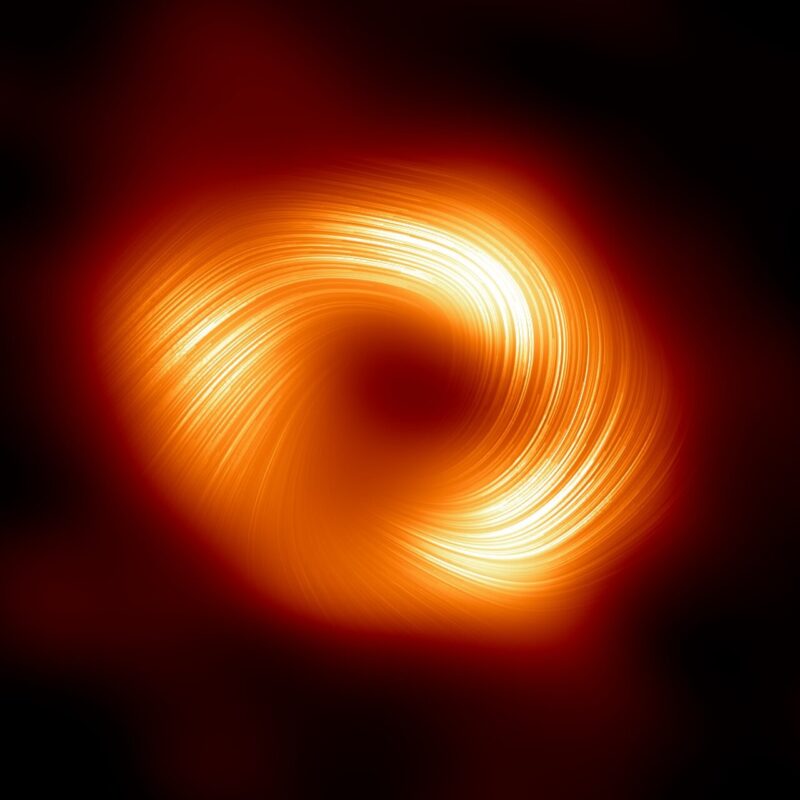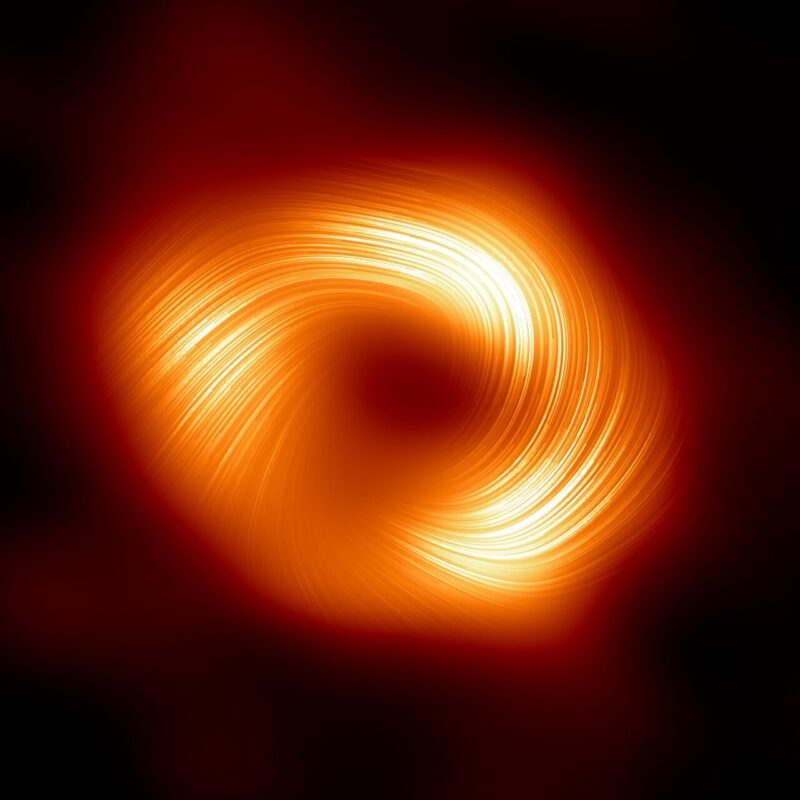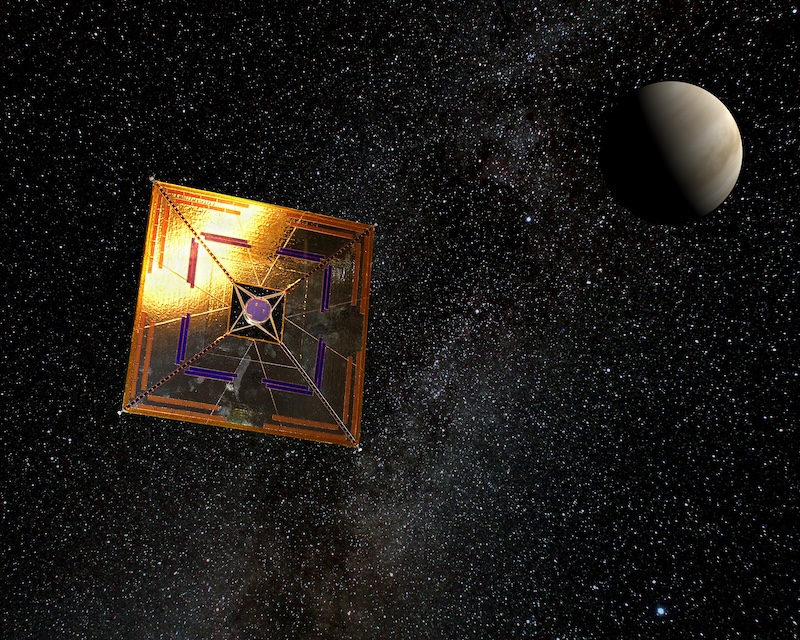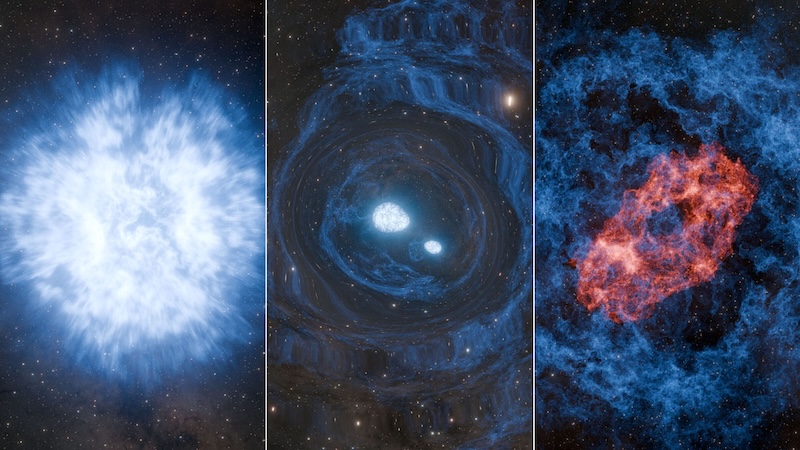Now Reading: Journey to a black hole? An innovative, epic mission concept
-
01
Journey to a black hole? An innovative, epic mission concept
Journey to a black hole? An innovative, epic mission concept


- Black holes are some of the most mysterious and powerful objects in the universe. Could we ever actually travel to one?
- A scientist in China has proposed a bold new mission concept. A tiny spacecraft – literally a microchip – could use a lightsail and laser beam to journey to a nearby black hole in about 70 years.
- The probe could study the fabric of spacetime and conduct experiments to test the laws of physics.
Journey to a black hole
Could we ever travel to a black hole? Would a spacecraft even be able to survive once it got there? It sounds like a plot from science fiction, but a researcher in China said it might be possible. Cosimo Bambi at Fudan University in China said on August 7, 2025, that a tiny spacecraft consisting of only a microchip with the weight of a paperclip could reach a nearby black hole in about 70 years. A laser beam from Earth would propel it through deep space at 1/3 the speed of light. Although such a mission isn’t possible right now, the estimate is that it could be possible 20-30 years from now.
The mission could help solve some of the biggest questions about black holes and conduct experiments to probe the fabric of spacetime and test the laws of physics. And all in the vicinity of an actual black hole.
Bambi published the peer-reviewed concept in a new paper in iScience on August 7, 2025.
How would it be possible to travel to a black hole?
The idea of traveling to a black hole seems almost too fantastic to ever actually be done. But could it? As the paper explains, such a mission would be daunting, but it might be possible in the relatively near future:
Black holes are the sources of the strongest gravitational fields that can be found today in the universe and are ideal laboratories for testing Einstein’s general theory of relativity in the strong field regime. In this article, I show that the possibility of an interstellar mission to send a small spacecraft to the nearest black hole, although very speculative and extremely challenging, is not completely unrealistic. Certainly, we do not have the necessary technology today, but it may be available in the next 20-30 years. The mission may last 80-100 years, but we would be able to obtain very valuable information about black holes and general relativity that might be difficult to obtain in other ways.

A long and challenging journey
The concept involves searching for a black hole close enough to Earth to make the trip conceivable. Scientists think there could be one – or more – only 20-25 light-years away. That’s still a long way, of course, but it could be doable. Bambi thinks we could find a black hole that close relatively soon:
There have been new techniques to discover black holes. I think it’s reasonable to expect we could find a nearby one within the next decade.
But if astronomers find one, then how do we get there? Traditional spacecraft are way too slow and cumbersome. So Bambi suggests using a really tiny spacecraft, called a nanocraft, that weighs no more than a paperclip. It would consist only of a small microchip and lightsail. A laser beam based on Earth would propel it through space. This is reminiscent of other lightsail spacecraft, which also use laser beams. They are, however, still largely a concept being tested within the inner solar system.
The tiny probe could accelerate up to a third of the speed of light. (The speed of light is 186,000 miles per second, or 300,000 km per second.) At that speed, it could reach the black hole in about 70 years. It would then send its data back to Earth, which would take another 20 years or so.

Answering questions and testing the laws of physics
Even though the probe is so small, it would still be equipped with instruments to analyze its surroundings. It could conduct experiments to test the laws of physics as we know them around black holes.
The probe could help answer some big questions about black holes. Is there really an event horizon? Is light really trapped within it? Do the laws of physics change near black holes, or are they constant? What about Einstein’s theory of general relativity?
In 2022, researchers with Breakthrough Starshot also proposed a lightsail spacecraft that could travel to the nearest star system, Alpha Centauri. It would reach a speed of 20% the speed of light and make the journey in as little as 20 years.
Bottom line: In a new mission concept, a tiny nanocraft probe could make the journey to a black hole. Once there, it could conduct experiments to test the laws of physics.
Source: An interstellar mission to test astrophysical black holes
Read more: New solar sail may travel to Alpha Centauri
Read more: Did Webb find a black hole formed by a direct collapse?
The post Journey to a black hole? An innovative, epic mission concept first appeared on EarthSky.
Stay Informed With the Latest & Most Important News
Previous Post
Next Post
-
 01From Polymerization-Enabled Folding and Assembly to Chemical Evolution: Key Processes for Emergence of Functional Polymers in the Origin of Life
01From Polymerization-Enabled Folding and Assembly to Chemical Evolution: Key Processes for Emergence of Functional Polymers in the Origin of Life -
 02Two Black Holes Observed Circling Each Other for the First Time
02Two Black Holes Observed Circling Each Other for the First Time -
 03How New NASA, India Earth Satellite NISAR Will See Earth
03How New NASA, India Earth Satellite NISAR Will See Earth -
 04Thermodynamic Constraints On The Citric Acid Cycle And Related Reactions In Ocean World Interiors
04Thermodynamic Constraints On The Citric Acid Cycle And Related Reactions In Ocean World Interiors -
 05Φsat-2 begins science phase for AI Earth images
05Φsat-2 begins science phase for AI Earth images -
 06Hurricane forecasters are losing 3 key satellites ahead of peak storm season − a meteorologist explains why it matters
06Hurricane forecasters are losing 3 key satellites ahead of peak storm season − a meteorologist explains why it matters -
 07U.S. Space Force awards $13.7 billion in new national security launch contracts to Blue Origin, SpaceX and ULA
07U.S. Space Force awards $13.7 billion in new national security launch contracts to Blue Origin, SpaceX and ULA




















